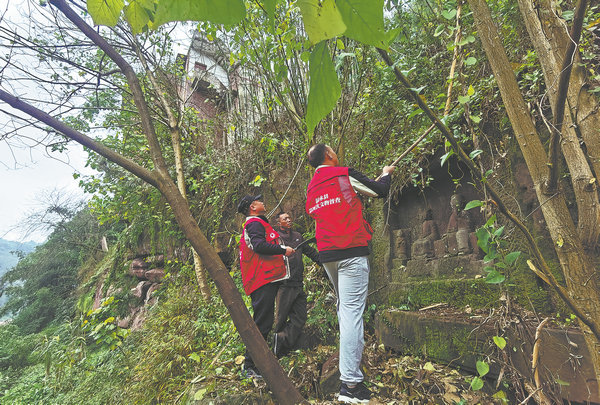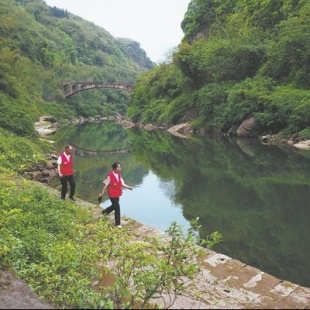Temple discovery rewards hard work
Finding lifts veil of history and inspires even more searches, Xu Lin reports in Luzhou, Sichuan.


After the gorge's construction, boat trackers started to work there for the official waterway that transported tribute rice and other goods.
Another new discovery of the fourth national census is the ruins of boat trackers infrastructure along the Yongning River, including a stone capstan on the bank and stone beds in a cliff cave serving as the trackers' rest area.
Liu's survey team also found remnants of a well-preserved Qing Dynasty port at another place, with stone stairs and traces of trackers hauling boats.
"These relics are vital tangible evidence of the Jiangmen Gorge's vibrant dredging and navigation activities, and we are making detailed protection plans. The gorge has greatly boosted trade between Sichuan and neighboring Yunnan and Guizhou provinces, making the ancient Xuyong site a bustling commercial hub," Huang says.
"Our initial aim was to check the stone capstan, but the true revelation was about 25 meters away, the unexpected discovery of the long-lost Ancestral Temple of Caogong," says Guo Jin, head of Jiangmen township's comprehensive cultural station.
Guo says trackers used the stone capstan to moor their boats to monitor and prevent collisions in turbulent waters.
The third national census on cultural relics in China was conducted from 2007 to 2011. Liu, who joined it as a novice in 2009, recalls the arduous expeditions through remote mountainous terrain where only unpaved paths existed.





































